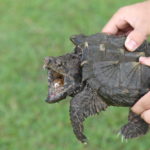If you want to surf, medals could be awarded as early as July 30th.
The wave is the result of a unique convergence of hydrodynamics, geology and engineering. What makes it beautiful and attractive also makes it dangerous.
“If it was a surf trail, it would be like a triple black diamond,” said former pro surfer Jessie Miley Dyer.
Teahupo’o is the name of both the wave and the coastal town, and loosely means “wall of skulls” or “broken skulls.” Either way, you get the gist.
It was considered too rough for surfing until the 1980s and 1990s, and at least five surfers died trying to surf it.
Surfers call it one of the “heaviest” waves in the world, a description that means danger but also power, according to Miley Dyer, commissioner of the World Surf League.
“It’s a gap in the reef, which means you can hit the reef, and it’s very shallow in some parts,” she said. “But it’s heavy because the wave itself is really thick. So you have all this water emptying onto the reef.”
All this water starts in violent storms thousands of miles away, near the South Pole.
Storms unleash waves of water and energy that flow largely unimpeded until they reach the base of the dormant volcano that formed Tahiti and crash into the surrounding coral reefs.
It’s this almost instantaneous transition from deep to shallow water that gives the wave its hollow shape and power, said Kevin Wallis, forecast manager at Surfline, the company that prepares forecast and status reports for the Olympic competition.
As the wave approaches, its water moves in a circular motion, pulling water off the reef as the upper shelf of the wave collapses on itself.
The wave face at Teahupoo can range in height from a few feet to 50 feet — 6 to 15 feet is typical, Willis said. But because of the unusual hydrodynamics, surfers riding inside the wave barrel are actually below sea level, and the water below the break is shallow.
Athletes have little protection if they hit the reef or are dragged across its sharp coral surface.
If the reef was just a wall of coral, Willis said, the wave would break all at once — what surfers call a “break” — and it wouldn’t be a good ride. There wouldn’t be long, pointy curls.
But at some point, it’s as if the current that has been flowing there for thousands of years decided to carve out the perfect spot for surfing.
Coral reefs only grow in salt water, so the reef formed at an angle out of the reach of fresh water coming from the river mouth. The constant water flowing down the mountain carved a deep channel out of the soft volcanic rock.
When a strong wave hits a particular crack in the reef, the water creates a long, tapered barrel as it rises and bends before dissipating.
“If you said to someone, ‘OK, make a shape that will absorb the wave energy in the shortest possible distance,’ well, that would be the exact angle at which this reef grew,” said surfing legend Lord Hamilton, who blew the minds of surfers when He overcame a brutal wave. In Teahupo’o in 2000.
“The energy of the wave will be completely dissipated in one impact, literally. That’s why it rises up and forms a giant cylinder and then explodes, because it takes the energy of the wave and absorbs it all within a few hundred feet.”
That means the nearby lakes are like nature preserves, Hamilton says. “You wouldn’t even notice there was a wave out there.”
The shallow, clear waters below, combined with the towering mountain backdrop, make Teahupoo “one of the most unreal waves you can ride,” says Miley Dyer. At the same time, the vortex is so intense that surfers can’t just admire the view.
““I had one of the most beautiful waves in the world,” she said. “And at the same time, I felt like I had to really focus. I couldn’t waste my time fooling around.”
Sally Jenkins and Adrian Blanco Ramos contributed to this report.
Sources: Bathymetric data via the French Hydrographic Office (SHOM), Surfline, and satellite images ©2024 Maxar Technologies.




